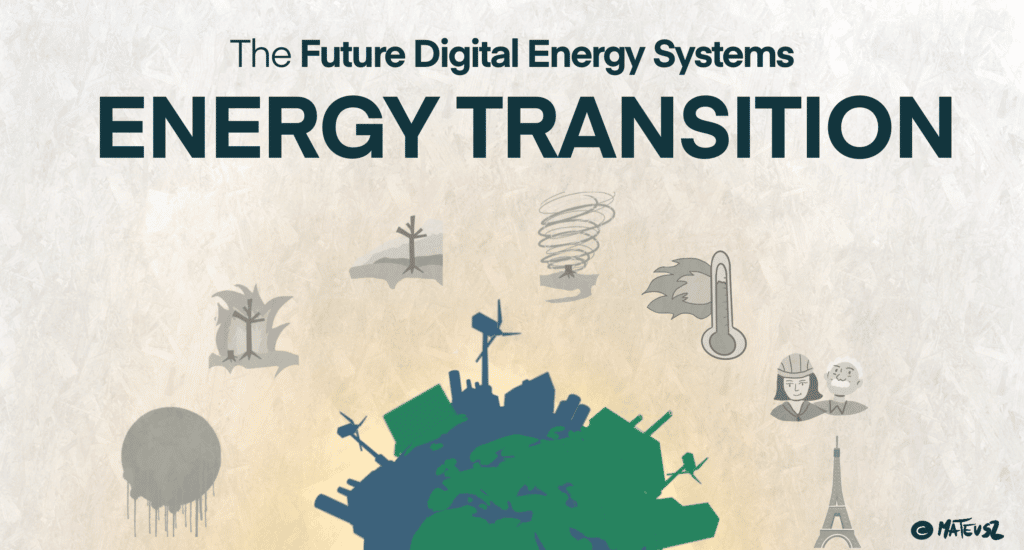Energy Transition is no longer one of the possibilities for the industry. With the latest research and acceleration of the legislation, it is the only path for sustainable development. A major constrain is available time. We have just realized that we have reduced our deadline by at least 10 years. In my last article called The Future Digital Energy Systems I have defined Energy Transition as a main driver in creating Future Digital Energy Systems. Let me dive deeper into the topic of Energy Transition and explore possible scenarios, directions, and technologies that ensure reaching the end goal — stopping global warming without the collapse of the modern world.
First, let’s take a look at how initially industry has changed our world, and now our world needs to change the industry:
⇾ people started industrialization which boosted greenhouse gases emissions
⇾ higher concentration of GHG results in global temperature increase
⇾ global warming starts to change our climate
⇾ society requests a change (sustainability)
⇾ politics start addressing this issue (Paris Agreement which led in Europe to Green Deal and now “Fit for 55”)
⇾ industry embraces legislation and stakeholders expectations by the energy transition
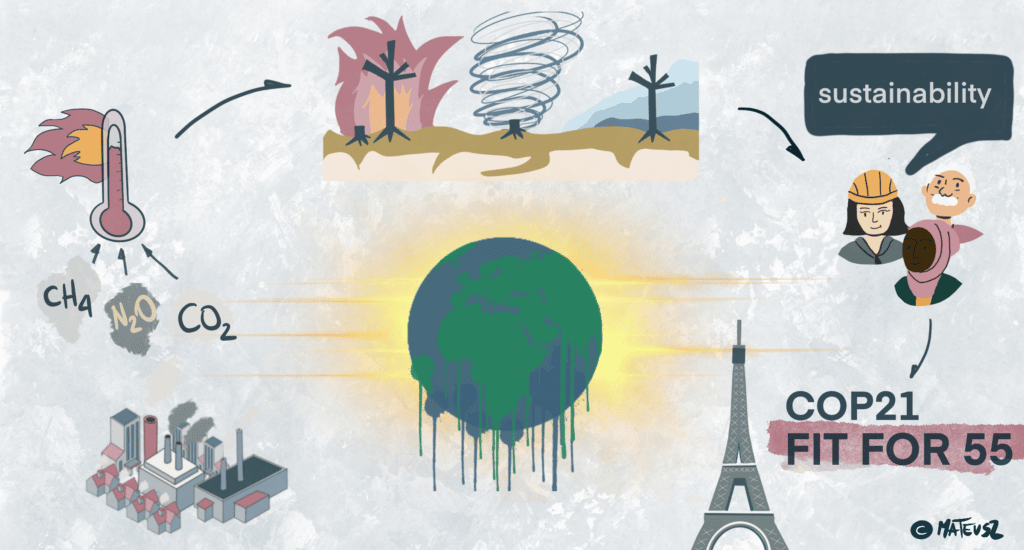
Needed revolution has a very limited timeframe
As these are global activities, each step is a significant period of time, but we can see that with every action time is significantly decreasing. We have started to destroy our planet almost 200 years ago¹, real effects on temperature increase have been noticed 80 years ago¹, so as a result, 10 years later, we have organized First Earth Day. Politics started addressing this issue at the UN conference in Rio almost 30 years ago, but the global consensus and commitment signed in Paris were just 6 years ago. Then in Europe, just 2 years ago, we came up with a strategy called Green Deal (similar strategies were announced in other parts of the world), and today we have an action plan called “Fit for 55” which in reality is no longer evolution of our energy systems and way we live — it is a revolution which needs to happen in a very limited time frame.
And it is not all, report² from the United Nations’ body responsible for climate change — The Intergovernmental Panel on Climate Change (IPCC) reveals that we have failed over the last decades to properly address global warming. An increase of the temperature (comparing the preindustrial era) by 1.5 °C will be achieved 10 years earlier (in 2030). From this perspective, revolutionary Fit for 55 may not be revolutionary enough.
“It is indisputable that human activities are causing climate change … ” IPCC²
On top of this, the same report² is closing all discussions about the cause of global warming. It is not the natural life-cycle of our plant, we, as humanity, are simply overheating the Earth. Take a look at the snapshot from report² to have a clear visualization of the quote above. It is indisputable.
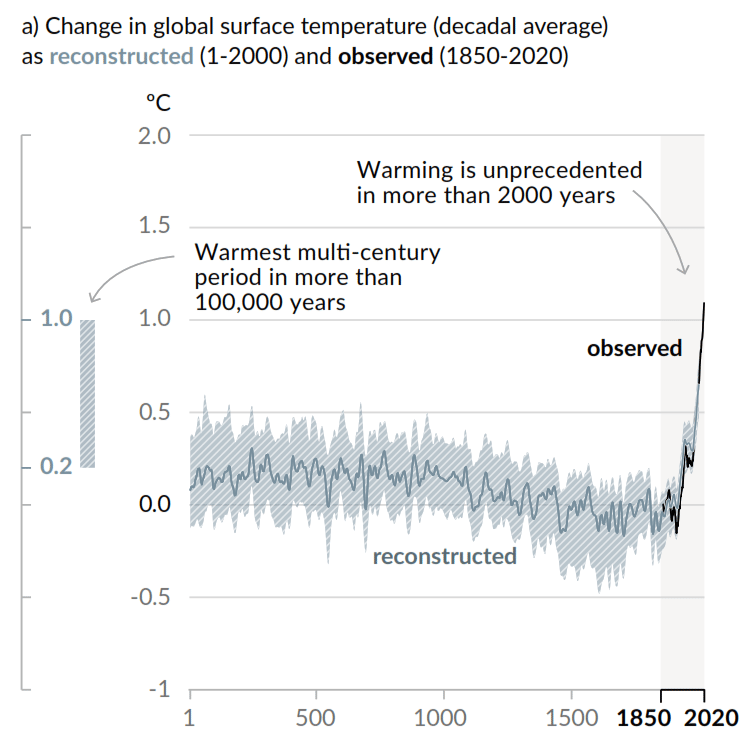
Summarizing this long introduction, Energy Transition is not a question of if or when it will happen, it is a matter of how and if we manage to change on time.
Race against time
Time starts to play a crucial role in this revolution.
Energy Transition is driven by three major forces: technology, society, and legislation. Till now technology had a leading role, as companies and governments were waiting for technology breakthroughs and reasonable Return On Investment to proceed with “green” projects. Either we are talking about wind turbines, photovoltaic, carbon storage and use, hydrogen, batteries, EVs, etc. — all new technologies are scaled up only if it pays off in a reasonable time horizon. These are the cardinal rules of the economy that allowed us to develop our society, significantly reduce poverty and create a wealth of the “western” world.
Yet, society thanks to better insight and inter-connectivity were fed with more detailed data and start to push companies and politicians to be bolder in their sustainability agendas. As we see today, this push is only successful through stakeholders of the industry. Capitalism at its finest.
Breakthrough in awareness
As mentioned in the introduction, all of this is followed by legislation that till now was voluntary and not globalized. A strong push from Europe and the USA does not have the same response in other parts of the world and as we can see Paris Agreement as a breakthrough in awareness, it is still up to countries to force any changes.
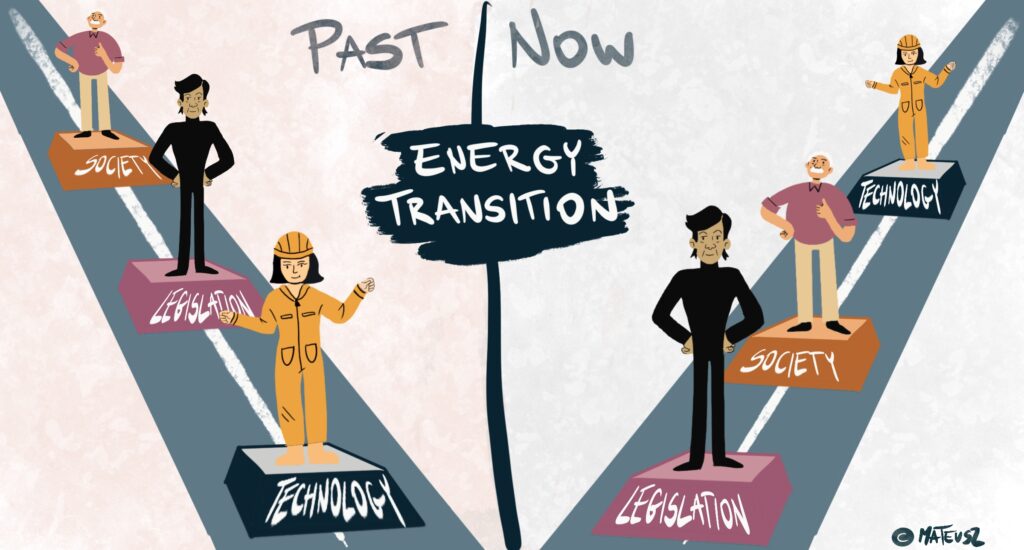
With the latest research (IPCC report) and plans (“Fit for 55”) we have a new deal, at least in Europe. Legislation is taking the driving seat and start forcing new economic order around sustainability (carbon taxes, EVs, deleting CO2 allowance). We can also see society to be braver in their claims towards major companies (i.e., a sentence in Haga against Shell).
By setting a new paradigm of sustainable economy companies and governments will be forced to speed up with implementing and developing new technologies not on ROI principles as it was till now but simply to maintain a license to operate.
Three directions
This is the best moment to look at how Energy Transition can influence our industry and planet. In my first article I described the new role of the market — prosumer, as a central point of the whole transition. Around prosumer, active participant of the energy market, we can outline three major directions of limiting global warming (as an end goal of energy transition):
Energy Efficiency — Looking for opportunities to limit the amount of consumed energy.
Decarbonization — Smarter qualification of energy sources based on their carbon footprint.
Decentralization — Scaling up network and energy sources combined with agile management.
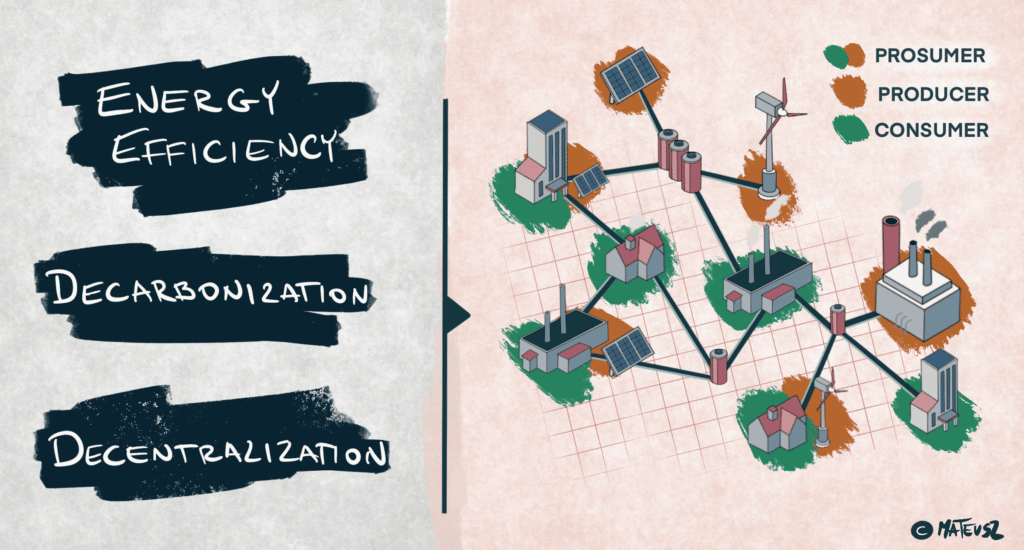
Each of these themes has different aftermath to The Future Digital Energy Systems and impacts different layers like operations, investment, reliability, etc. Yet to properly assess the contribution
to the end goal we need to bring them down to a common denominator which is ….
Stay tuned with me. In coming articles I will disclose what energy efficiency, decarbonization and decentralization really mean and how we can genuinely evaluate its impact on saving our planet.
With The Future Digital Energy Systems articles series, I’d like to address the main drivers and enablers of our future energy landscape. Analyzing available technology, required changes in the
organizations, legislation, and society, I want to disenchant and simplify all actions needed to fulfill net-zero commitments and limit global warming.
References:
- Early onset of industrial-era warming across the oceans and continents
https://www.nature.com/articles/nature19082 - IPCC. 2021 “Climate Change 2021: The Physical Science Basis.”
https://www.ipcc.ch/report/sixth-assessment-report-working-group-i/
